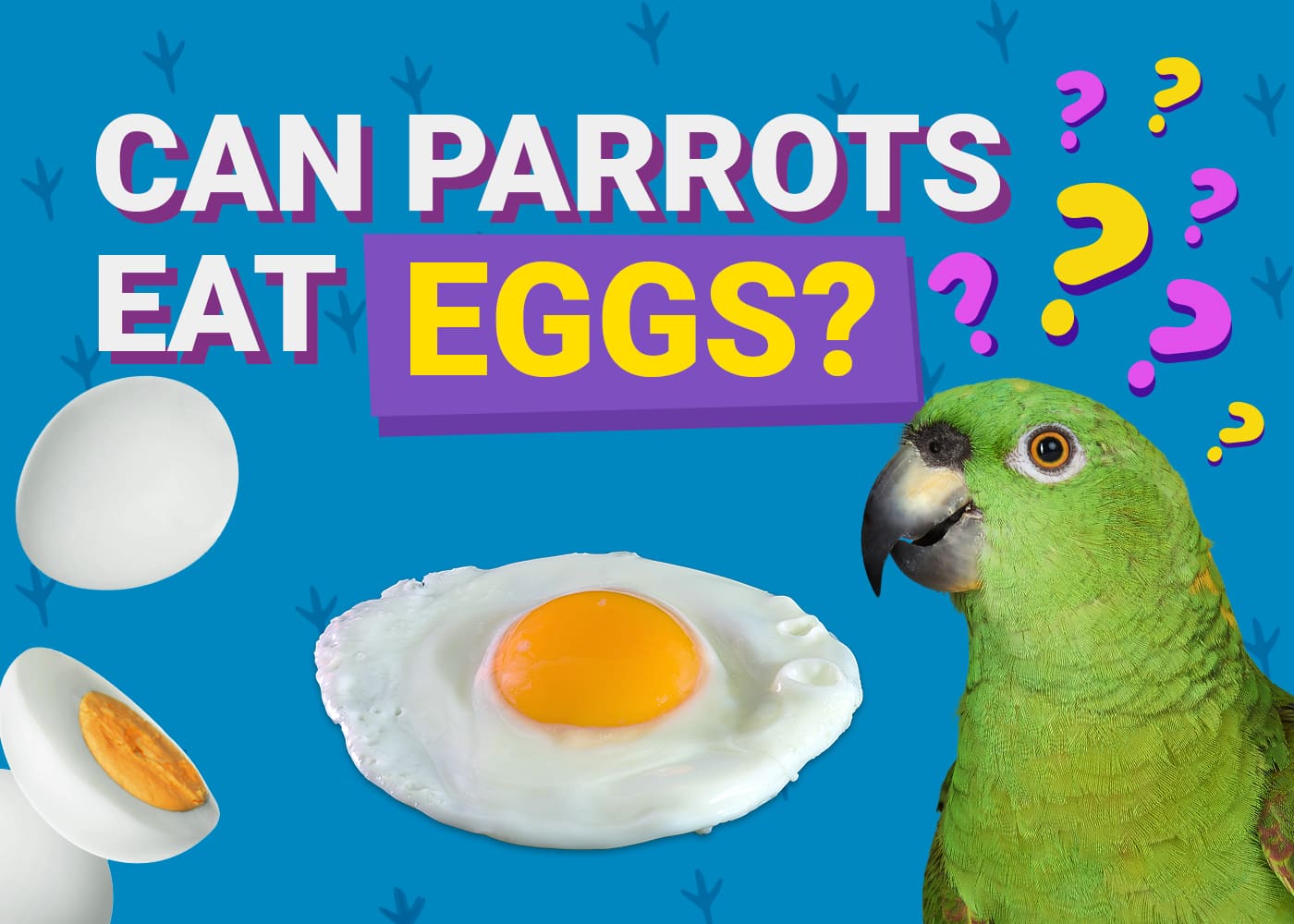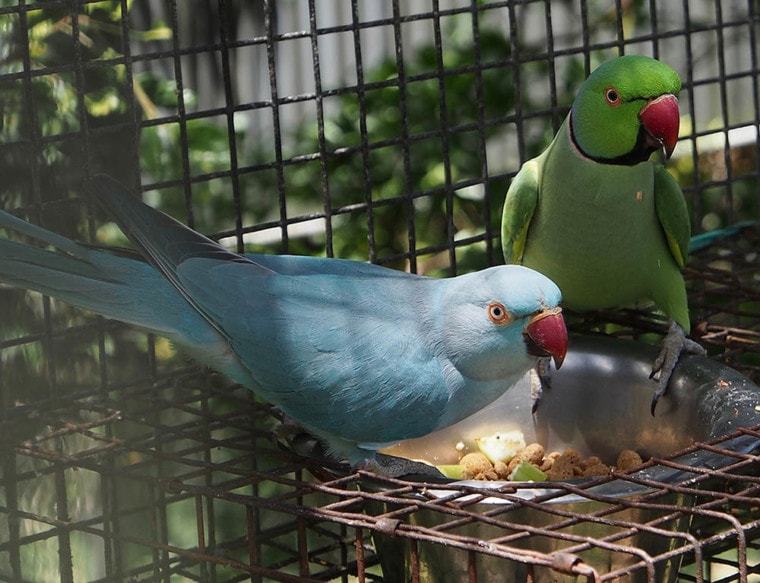
The Indian ring-necked parakeet is a popular bird to live with as a companion. These temperamental birds have big personalities and love to vocalize. They are playful and love to entertain their family. Due to their temperamental natures, these birds require a lot of training and attention to stay tame.
If you’re considering an Indian ring-necked parakeet as a new member of your family or simply want to learn more about this incredible species, read on below and discover things you may not have known about this fun-loving bird.
Species Overview
| Common Names: | Indian Ring-Necked Parakeet, Indian Ringneck, Rose Winged Parakeet |
| Scientific Name: | Psittacula krameri manillensis |
| Adult Size: | 14-17 inches |
| Life Expectancy: | 40 years |
Origin and History
The Indian ring-necked parakeet originated in Ceylon. These colorful birds have become quite popular as pets, but are still found living in the wild. Currently, these birds are still abundantly found in both natural and urban areas in India and Pakistan. This bird can also be found thriving in Sudan and the Middle East.
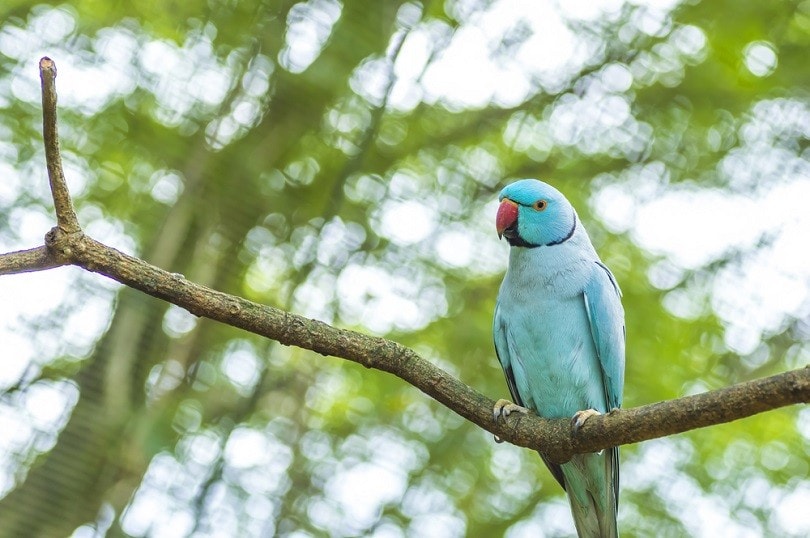
Temperament
The Indian ring-necked parakeet has a bad reputation for being a temperamental and troublesome bird. Known for being hard to train and slightly nippy, this reputation is not exactly deserved. As highly intelligent birds, they get bored easily. When this happens, they do get somewhat destructive. Chewing is often a result of these situations.
Speech & Vocalizations
This bird is a real talker. With their high level of intelligence, these birds can start talking around 8 months old. They have the ability to learn up to 200 words. Quick learners, the Indian ring-necked parakeet may become an average speaker or revert to yelling and screeching. Luckily, for most owners, these birds enjoy speaking and make having one as a pet a fun adventure.
Indian Ring-Necked Parakeet Colors and Markings
Although there are color mutations such as albinos, lutinos, cinnamons, bright yellows, blues, and even greens most Indian Ring-Necked Parakeets feature a bright lime green color with yellow under the wings and blue tail feathers.
As a dimorphic species, the colorings and marking often determine the sex of the bird. Dark red beaks, black markings on their faces, three colored bands around the neck are markings of males. Females are free of facial markings and neck bands.
Caring for the Indian Ring-Necked Parakeet
The Indian ring-necked parakeet requires quite a bit of attention. With proper handling and love, these birds will make great companions. They are known to be temperamental when they feel neglected. If an owner can provide them with the adequate love and attention they need, they quickly become great companions.
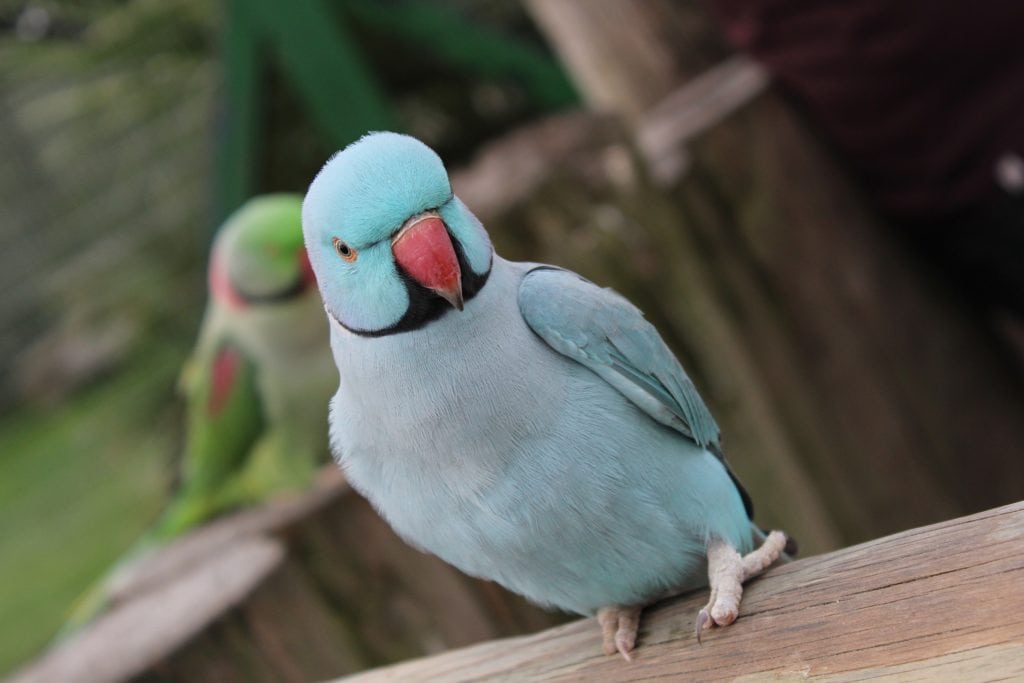
Training
Scolding is not good for this bird species. If they act out or become destructive, loud voices can cause them to fear people. This isn’t good for the bird or an owner’s relationship with their pet. When your pet acts out, ignore their behavior as best you can. When they are behaving properly, offer them lots of positive reinforcement to lead them to better behavior.
Space Requirements
These birds are quite active and have large tails. This means they require adequate space to be happy and healthy. Purchasing a large cage is most likely the best option. This will give them lots of room to play and stay physically active.
Companionship
Considering their need to socialize, if owners aren’t able to be home during the day, having a second bird is a good idea. As a species that prefers to be in a flock, being alone may cause depression or lead to acting out.
Grooming
The Indian ring-necked parakeet may require a little help with its grooming. By adding wooden bars to the cage, they can usually take care of trimming their nails. If not, owners will be expected to do this. The same can be said for bathing. If you provide your bird with a shallow dish to bathe in and they avoid it, you need to step in and offer them a proper bath and area to dry.
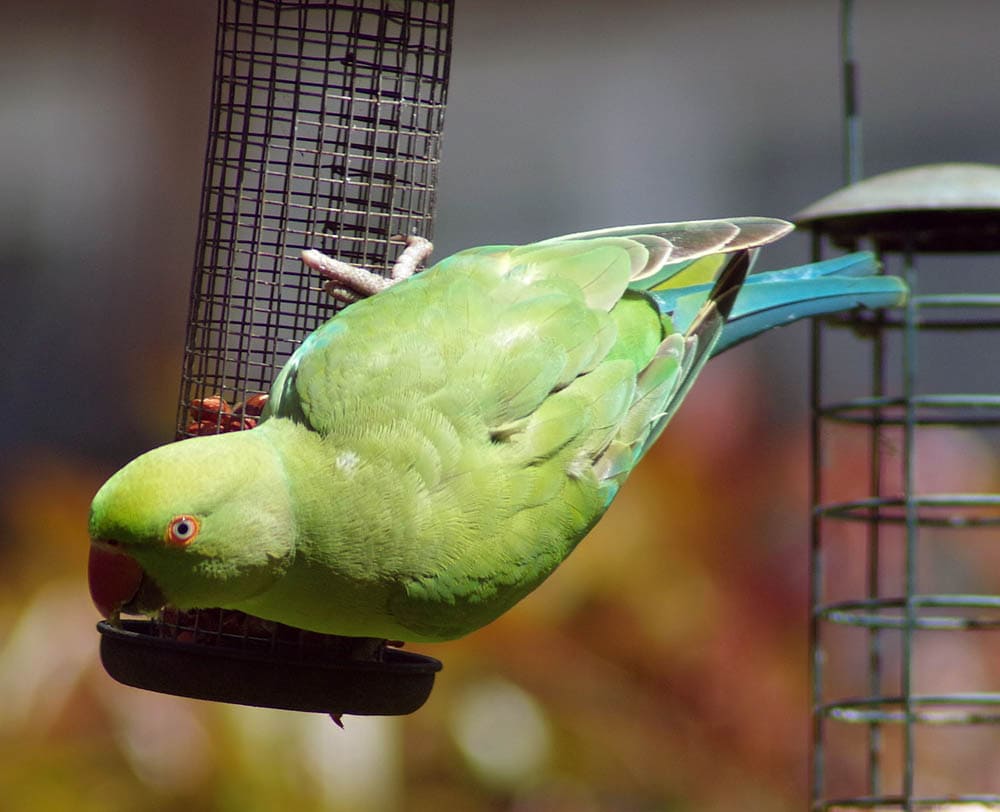
Common Health Problems
The Indian ring-necked parakeet is considered an overall healthy bird. With yearly checkups, proper diet, and care these birds will mostly be fine. There are a few health issues you should keep your eyes open for including polyomavirus, psittacosis, aspergillosis, and other bacterial infections.
Diet and Nutrition
These birds live quite a while which means owners are responsible for a long life of feedings. To keep your Indian ring-necked parakeet happy and healthy you should offer them a good mixture of foods. A balanced diet of pellets, veggies, fruits, and other treats is a great way of making sure your companion has all the vitamins and nutrients needed to stay healthy.
Exercise
These birds are very active and require adequate room to play. While having a large cage makes playtimes safe when owners aren’t around, having a safe area in the home for your companion to fly and stretch their wings is recommended. This keeps them better exercised and happier in the long run.

Where to Adopt or Buy an Indian Ring-Necked Parakeet
The Indian ring-necked parakeet is common in most local pet stores. If you are unable to find one of these fun-loving birds at the pet store, reach out to aviary shops and rescues. They should have these parakeets simply waiting to make a home with you.
Conclusion
The Indian ring-necked parakeet is a fun, loving, and talkative bird to make part of your family. If you have dreamed of having a bird who can learn words, vocalize itself, yet loves to be around you and shows affection, this is the bird for you. Remember, however, they are flock birds. If you aren’t available to be their flock, make sure they have a companion to spend time with. This will keep them happier and let you enjoy many years with this amazing bird.
See also:
Featured Image Credit: Gejza Cepela, Shutterstock





